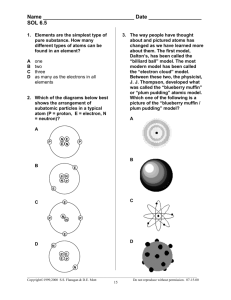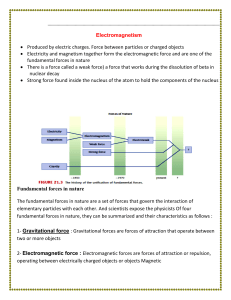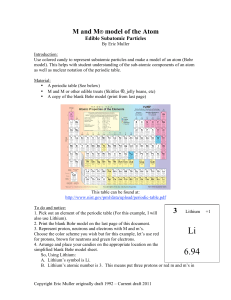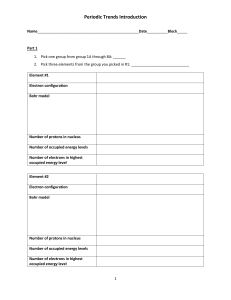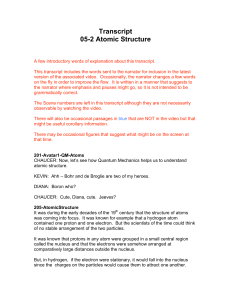THINGS TO KNOW CHAPTER 3 CHEM101 Atomic Structure Overview
advertisement
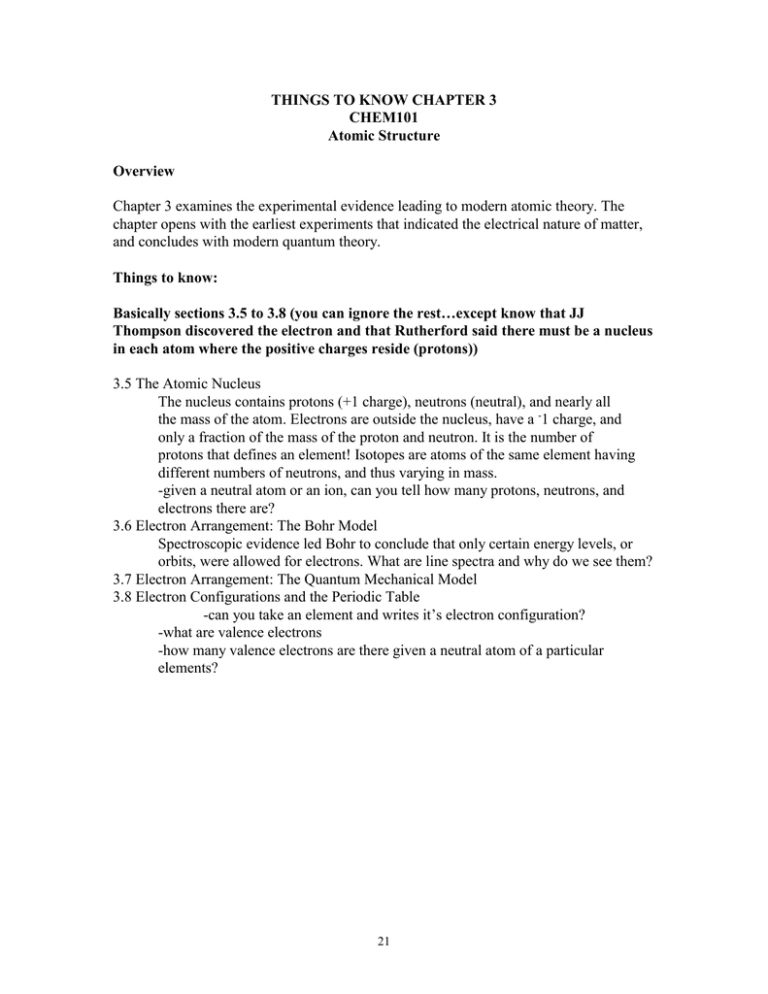
THINGS TO KNOW CHAPTER 3 CHEM101 Atomic Structure Overview Chapter 3 examines the experimental evidence leading to modern atomic theory. The chapter opens with the earliest experiments that indicated the electrical nature of matter, and concludes with modern quantum theory. Things to know: Basically sections 3.5 to 3.8 (you can ignore the rest…except know that JJ Thompson discovered the electron and that Rutherford said there must be a nucleus in each atom where the positive charges reside (protons)) 3.5 The Atomic Nucleus The nucleus contains protons (+1 charge), neutrons (neutral), and nearly all the mass of the atom. Electrons are outside the nucleus, have a -1 charge, and only a fraction of the mass of the proton and neutron. It is the number of protons that defines an element! Isotopes are atoms of the same element having different numbers of neutrons, and thus varying in mass. -given a neutral atom or an ion, can you tell how many protons, neutrons, and electrons there are? 3.6 Electron Arrangement: The Bohr Model Spectroscopic evidence led Bohr to conclude that only certain energy levels, or orbits, were allowed for electrons. What are line spectra and why do we see them? 3.7 Electron Arrangement: The Quantum Mechanical Model 3.8 Electron Configurations and the Periodic Table -can you take an element and writes it’s electron configuration? -what are valence electrons -how many valence electrons are there given a neutral atom of a particular elements? 21




